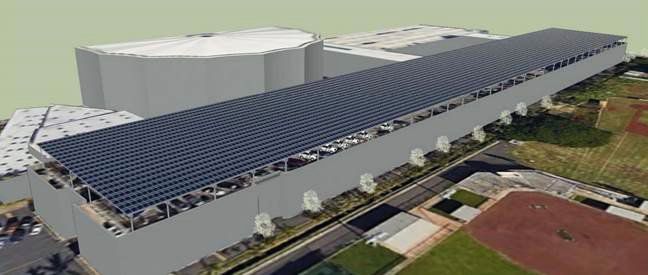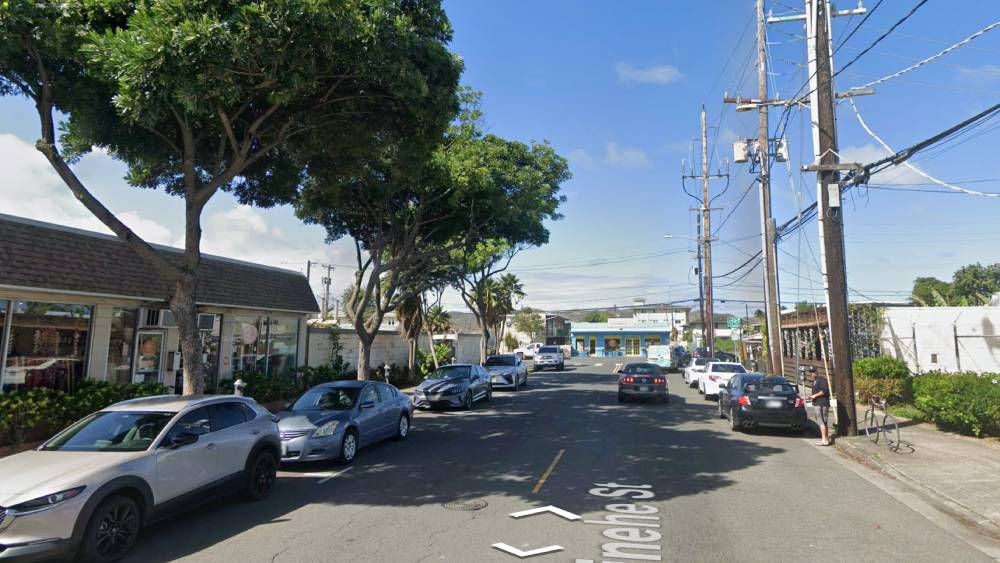HONOLULU — Mayor Rick Blangiardi, city leaders and industry partners broke ground on Tuesday for an $11 million project to install over 4,500 large-format photovoltaic panels atop the Neal S. Blaisdell Center’s parking structure.
The “solar canopy” will cover the entire upper deck of the structure providing shade for parking while generating nearly 100% of the Blaisdell Center’s daytime energy needs. In addition, a Tesla Megapack battery will be installed to help store energy to power evening events.
“By embarking on this project to generate renewable energy on-site at the Blaisdell campus, we are saving money, creating local jobs and achieving the clean energy goals that the city has wholeheartedly adopted,” said Blangiardi in a news release. “This project perfectly blends our commitment to modernizing city operations with our promise to be better stewards of our climate future, and we are excited to celebrate today’s groundbreaking with our community.”
Director of Enterprise Services Dita Holifield added, “We’re really excited that people can feel good about our events, knowing they are powered by renewable energy while also saving money for the city’s operation of the Blaisdell Center.”
As part of a $43.6 million renovation project that started in May 2023, work on improving energy efficiency and lighting upgrades has been ongoing at the Blaisdell. When combined with the new photovoltaic system, these improvements throughout the center are expected to have a huge impact on Blaisdell’s energy usage.

“We took an approach of reducing energy use first, through energy efficiency improvements across the campus, and then evaluated how much renewable energy could be used with the space available above the Blaisdell parking structure,” said Program Administrator Allyn Lee, Mechanical & Electrical Division in the city’s Department of Design and Construction.
Officials say the City and County of Honolulu is not paying for the $11 million project. The city will instead purchase energy from the solar panels at roughly one-third less than the utility rate, creating savings without any capital expense from taxpayers.
The installation is part of the city’s $100 million Energy Conservation Measure Project currently underway at 82 city facilities that include solar photovoltaic and other conservation measures.
Once completed, the solar PV canopy atop the Blaisdell’s parking structure “will generate renewable energy electrical production of approximately 3,900,000 kWh annually.” According to the EPA’s Greenhouse Gas Equivalencies Calculator, it’s equivalent to 2,794 metric tons of carbon dioxide avoided and the greenhouse gas emissions from:
- 665 gasoline-powered passenger vehicles driven in one year
- 7,146,766 miles driven by an average gasoline-powered passenger vehicle
- 314,432 gallons of gasoline consumed
- 551 homes’ electricity used in one year
- 6,470 barrels of oil consumed
- 184,474,425 smartphones charged
“Such projects not only make sense operationally, but they also implement the city’s Climate Action Plan,” said Matthew Gonser, executive director of the Mayor’s Office of Climate Change, Sustainability & Resiliency.
“This administration remains committed to tackling the direct cause of climate change – carbon pollution – while also improving government services and supporting the necessary community-wide clean energy and transportation transition.”








40325)
